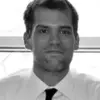Do the right thing—and save money—by addressing burnout
Nobody wakes up hoping for a bad day. Nobody walks into work hoping things go wrong. Similarly, cardiologists don’t expect to experience burnout but many do. A fair share grow to hate their jobs, with cynicism and apathy overtaking a belief in doing good, depression deepens and debilitation and exhaustion become the norm.
Addressing the causes of physician burnout is a pressing concern for healthcare as a whole. Doing so not only improves the quality of life of physicians but can also improve the bottom line, according to new research.
A recent study in JAMA: Internal Medicine crunched the numbers. They examined a hypothetical organization with 450 employees. It turns out that an investment of $1 million to address physician burnout reduces costs—including those related to turnover and replacement—by $1.125 million. That kind of ROI is real money, and that’s before adding in the social and moral positives associated with a happier, more productive workforce.
“The business case to address physician burnout is multifaceted and includes costs associated with turnover and lost revenue associated with decreased productivity, as well as financial risk and threats to the organization’s long-term viability due to the relationship between burnout and lower quality of care, decreased patient satisfaction, and problems with patient safety,” wrote the researchers, led by Tait Shanafelt, MD, of Stanford University.
“Although there is a strong moral and ethical case for organizations to address physician burnout, financial principles can also be applied to determine the economic cost of burnout and guide the appropriate initial and ongoing investment to address the problem,” they wrote.
On-the-job stress can get the best of anyone. Here’s evidence that shows fighting back is good for the bottom line and peace of mind.
